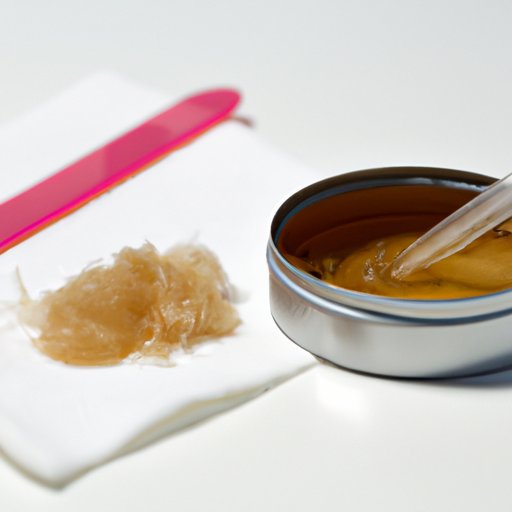Introduction
Many of us have been affected by an ingrown hair at some point in our lives. An ingrown hair is a common skin condition that occurs when a shaved or tweezed hair grows back into the skin. It is characterized by inflammation, redness and pain in the area of the ingrown hair.
It can happen to anyone, regardless of age, gender or ethnicity. The most common symptom of an ingrown hair is a small bump on the skin that looks like a pimple. In some cases, it may also be accompanied by itchiness, tenderness and swelling.
Identifying an Ingrown Hair
The most common symptom of an ingrown hair is a small bump on the skin that looks like a pimple. It’s usually red and inflamed, and may be accompanied by itchiness, tenderness and swelling. In some cases, the bump may become infected and filled with pus.
If you suspect you have an ingrown hair, it’s important to visit your doctor. They will be able to diagnose the problem and recommend the best course of treatment.
Preventing Ingrown Hairs
The best way to prevent ingrown hairs is to practice good hygiene and use proper hair removal techniques. Make sure to clean the area before and after shaving, waxing or tweezing. Use a sharp razor and shave in the direction of hair growth. Avoid using hot wax, as this can irritate the skin and increase the risk of ingrown hairs.
It’s also important to exfoliate regularly to remove dead skin cells and keep pores unclogged. This will help reduce the chances of hairs getting trapped under the skin.
Popping an Ingrown Hair
If you have an ingrown hair, you may be tempted to pop it. While this can be effective in some cases, it’s not recommended as it can cause further irritation and lead to infection. If you do decide to pop an ingrown hair, make sure you do it carefully and gently.
There are a few different methods for popping an ingrown hair. One method is to use a sterile needle to carefully lift the hair out of the skin. Another method is to apply warm compresses to the area to soften the skin and make it easier to remove the hair. You can also try using tweezers to pull the hair out.
If you’re unable to remove the hair, or if the area becomes infected, it’s best to see a doctor for further treatment.
Home Remedies for Treating an Ingrown Hair
There are several home remedies that can be used to treat an ingrown hair. For example, applying a warm compress to the area can help reduce inflammation and make it easier to remove the hair. Applying aloe vera gel or tea tree oil can also help soothe the skin and reduce redness.
You can also try using natural ingredients such as apple cider vinegar, witch hazel or baking soda to help reduce inflammation and fight bacteria. To use these ingredients, mix them with water to create a paste and then apply it to the affected area.
Aftercare for Skin
Once the ingrown hair has been removed, it’s important to take care of your skin. Cleanse the area with a gentle cleanser and warm water. Then, apply a moisturizer or medicated cream to help soothe the skin and reduce inflammation.
It’s also important to avoid picking at the area, as this can lead to further irritation and infection. Additionally, try to avoid shaving or waxing in the same area until the skin has completely healed.
Conclusion
Ingrown hairs are a common skin condition that can be caused by improper hair removal techniques. It’s important to identify the problem early and take the necessary steps to prevent and treat it. Popping an ingrown hair is not recommended, but instead natural ingredients such as aloe vera, apple cider vinegar and witch hazel can be used to help reduce inflammation and soothe the skin.
Finally, make sure to follow up with proper aftercare to ensure the area heals properly and there is no further irritation or infection. With the right steps, you can successfully treat an ingrown hair.


